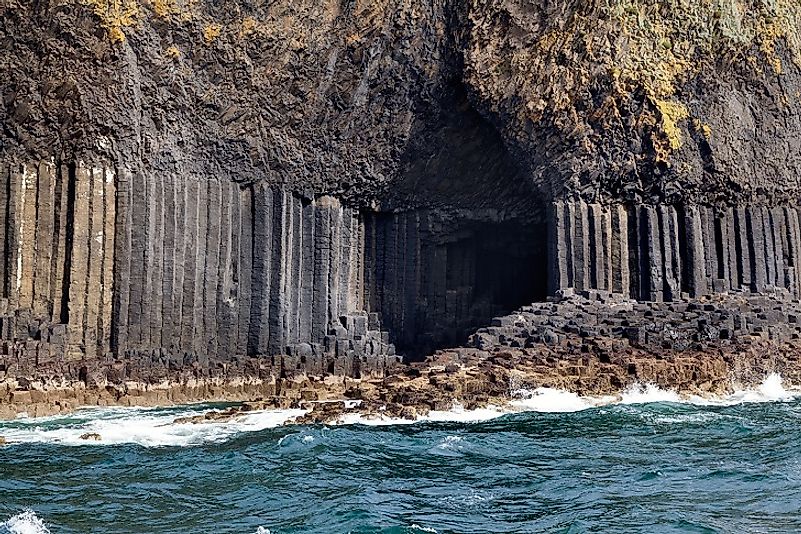Fingal's Cave, Scotland - Unique Places around the World

5. Description
Fingal's Cave is a sea cave formed from basalt columns, and is partly filled by the sea at high tide. The cave can be found on the island of Staffa in the Southern Hebrides off the Scottish coast. The cave's ceilings and walls are covered with basalt columns that cooled from ancient lava flows, and appear like piles of man-made columns. Sir Joseph Banks, an 18th Century English naturalist, discovered the cave in 1772 in one of his forays onto the island. The best time to visit Fingal's Cave is in the warm monthsm between April and September. The sea cave can be accessed by tour boats, and explored on foot with the help of a guide.
4. Tourism
It seems that tourism has long been a part of Staffa island, which has been uninhabited for more than two centuries. Its many notable historical visitors have included Prince Albert and Queen Victoria, the German musical composer Felix Mendelssohn, the English Romantic painter Joseph Mallord William Turner, and such poets as Tennyson, Wordsworth, Keats, and Walter Scott. Notable explorers Dr. David Livingstone and Jules Verne also made their own trips to the island in the 19th Century. The sea cave, also known as the "cave of melody", is 33 hectares in size, situated in an area that was inhabited as recently as the 1700s. Today, however, only birds and tourists visit there to enjoy its solitude. Getting there is as easy as boarding a cruise boat from Iona or Fionnphort in Scotland. There are many international flights serving Scotland itself from all parts of the globe, so a visit to the cave is within the reach of most international travelers.
3. Uniqueness
The name Fingal comes from a Scottish misinterpretation of the name Fionn Mac, a warrior and huntsman in Irish and Manx Mythology. It became known as such following the publication of Scottish poet James Macpherson's famous poem about the very same mythical figure, titled Fingal, an Ancient Epic Poem. Fingal's Cave is just one of the attractions on Staffa Island. The sea cave itself has a high cavernous entrance, which is said to resemble the arched ceiling of a cathedral. Getting to the cave on foot is a great way to begin exploring its geology, though there's also a boat tour that enters the cave during low tide, given the sea is at its calmest and therefore safest. One of the most interesting things in the island is its population of Puffin birds, which will congregate around you if you stand still long enough. This collective behavior happens as a result of the survival instinct of Puffins, as it makes them a less vulnerable target to predatory Seagulls when they are close to people.
2. Habitat
Visitors to the island can enjoy the sight of elusive Seagulls, all the while sociable Puffins will be gathering around and gawking up at them. From May to August are the best months to observe and enjoy the company of the Puffins. Other important bird species on the island are Razorbills, Fulmars, Great skuas, Great Northern divers, Gannets, and Guillemots. An observant visitor will see aquatic mammals as well, such as Seals, Dolphins, and Porpoises. Basking sharks can also be found around the waters of the island, while summertime brings back the magnificent Minke whales and Fin whales closer to the island. For the more botanically inclined visitors, the island's main displays of flora include such vegetation as wild thyme, bird's foot trefoils, lichens, and buttercups.
1. Threats
The island has many areas which are slippery, and thus pose a risk to the tourist who ignore the need to cross them with care. The sea cave's floor and walkways become especially slippery and dangerous to those wearing improper footwear. The island has sparse vegetation, and taking samples or keepsakes of it, including native wildflowers, is not allowed. Human recreational impacts on sea caves have been dismissed as insignificant, though industry and coastal development could pose a threat to the structure of the cave, and have possible detrimental effects on the tidal flows that will shape the future, natural development of the sea cave. Waterborne pollution and waterborne litter are also considered potential threats to local wildlife and visitors alike.











